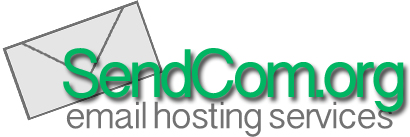Privacy & Security
There are many ways your computer can get viruses or be hacked by other users. One of the most common is through e-mail. Some e-mails come attached with obnoxious worms that infect your computer as soon as you open the message. Other messages do not have a built-in virus but are sent out by people trying to get you to willingly divulge your personal information. You can never be too wary when looking through your inbox, but here are some guidelines that might help you determine an e-mail's legitimacy.
- Keep your browser up-to-date. Generally speaking, companies do not release browsers with serious vulnerabilities, but later developments by hackers may render these old programs susceptible to intrusion. If there are patches or new versions of your current browser software, download them.
- Along with your browser, keep your e-mail filters up-to-date. Spammers consistently find new ways to bypass your spam blocker.
- Never open an e-mail that isn't from someone you know unless they identify themselves specifically. "Your boss" is too generic, but "Rick, the manager" is probably safe (assuming your manager's name is actually Rick). In certain careers such as radio stations or companies that work with a variety of clients, this is not always possible. In these instances it may be necessary to open every e-mail that isn’t obviously spam. If this is the case, update your computer's virus protection
- You can protect your identity by creating an e-mail address that doesn't use your name. However, clever pseudonyms such as animallover89@somewebsite.com are seen as unprofessional in the business world. Companies that have their own e-mail server generally assign a name that uses either just a last name, just a first name, or one with the initial of the other such as kjennings@fakecompany.com.
- Hackers can intercept e-mails as they travel between addresses. In order to prevent this from happening, you need to encrypt any e-mails with information that you wish to keep confidential. Gmail and Yahoo mail both feature built-in Secure Sockets Layer encryption. Other encryption software is available online and in most stores that sell security software.
- If you work in an office with a lot of other people and you need to step out for a meeting or for your lunch break, lock your computer. Otherwise, any of your coworkers could walk by and access your e-mail account (assuming you checked the box to stay logged in from your IP address)
- Use a secure password that even your best friend wouldn't be able to guess. Include both letters and numbers. If your e-mail client distinguishes between cases, include both. Your password shouldn’t be the name of your pet, spouse or favorite sports team, but it should be memorable so that you don't forget it.
- Some e-mail services have a Do Not Forward option that a writer can check to prevent the recipients from sending the information to other individuals the material was not intended for. If this sounds like a feature that you could benefit from, invest in one of these programs. The newest version of Microsoft Outlook includes the Do Not Forward option.
- Never send personal information through e-mail if you have other alternatives, even if you have taken all security precautions. If a message asks for your e-mail password for some sort of confirmation, the sender is "phishing," which is a term that refers to luring in a user and convincing them to divulge their personal information.
- If you send an e-mail to an address that doesn't exist, you will receive a failure notice. However, if you receive a failure notice but you haven't sent out an e-mail, delete it without opening it. It may contain malware.
